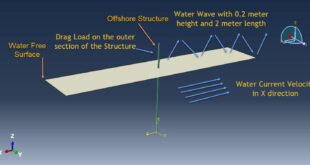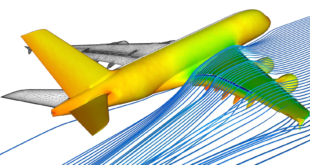Abaqus AQUA is a specialized module within the SIMULIA Abaqus finite element analysis (FEA) software that simulates the effects of hydrodynamic loads on offshore and marine structures. It is beneficial for analyzing structures exposed to waves, currents, and buoyancy forces, such as
Offshore platforms (oil & gas rigs, wind turbines)
Subsea pipelines
Ship components
Floating structures
Key Features of Abaqus AQUA
Wave Loading: Simulates regular/irregular waves (Airy, Stokes, or user-defined waves
Current Effects: Accounts for steady or time-varying ocean currents
Buoyancy & Hydrostatic Pressure: Models fluid-structure interaction (FSI) due to water pressure
Morison’s Equation: Estimates drag and inertia forces on slender structures
Dynamic Analysis: Supports static, frequency-domain, and time-domain analyses
In this tutorial, a riser group under various loads in Abaqus AQUA has been modeled. You can see a figure of the assembled parts below
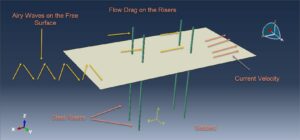
Typical Applications
Wave impact on offshore platforms
Vortex-induced vibrations (VIV) in risers/pipelines
Sloshing effects in tanks
Structural fatigue due to hydrodynamic loads
AQUA is integrated into Abaqus/Standard and Abaqus/Explicit, allowing coupled analysis with other physics (e.g., wind, seismic loads). In this example, the current load is applied with velocity along the X direction, the wave is considered a horizontal wave with an angle to the X and Z directions, and a drag force is also applied to the risers.
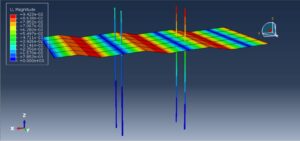

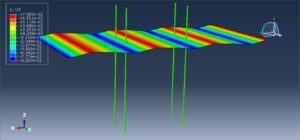

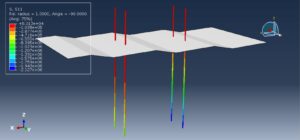
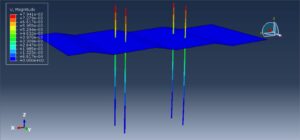
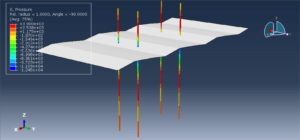
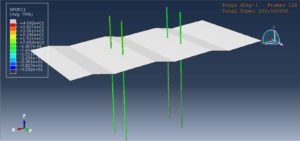
 Abaqus tutorials Abaqus tutorials
Abaqus tutorials Abaqus tutorials
